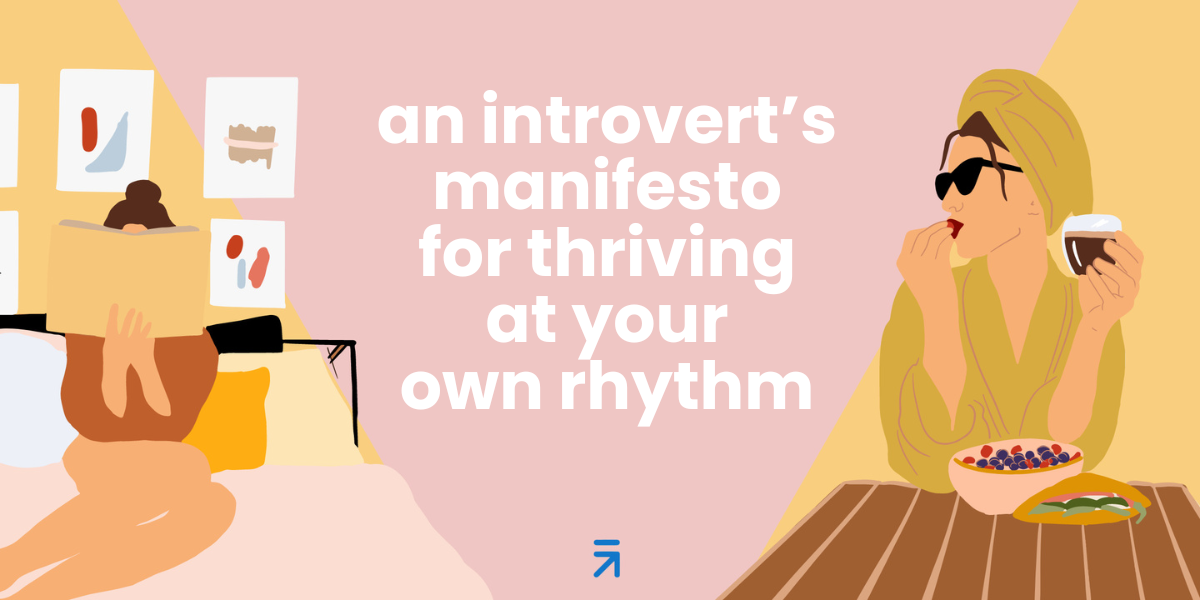Maximizing Efficiency: How Power Napping Can Help You Stay Sharp at Work

Stay tuned to our latest news
In today's demanding and ever-evolving professional landscape, where time is a precious commodity, finding ways to stay sharp and focused throughout the workday has become an essential pursuit. While many resort to coffee, energy drinks, or other energy-boosting methods, there's a simple yet often overlooked solution that can provide remarkable benefits: power napping.
Power napping, also known as a catnap or a short nap, involves taking a brief period of rest during the day, typically lasting between 10 to 30 minutes. It may seem counterintuitive to pause and sleep amidst a bustling work environment, but numerous studies have shown that power napping can significantly enhance cognitive function, improve mood, and boost productivity.
So, if you find yourself striving to maintain focus and productivity throughout the day, amidst the demands of modern professional life, and the traditional remedies fall short, let’s go through the benefits of power napping, the ideal duration for a nap, and practical tips to make the most out of your nap time. Get ready to unlock a new level of efficiency and elevate your performance.
What Is Power Napping?

As mentioned previously, power napping is a short period of sleep that lasts for about 10 to 30 minutes. It is a brief and refreshing rest taken during the day to rejuvenate the mind and replenish energy levels. While power napping might sound simple, it has gained significant attention due to the numerous benefits it provides. Whether you are a student, a professional, or simply someone seeking a boost in productivity and mental alertness, power napping can be a valuable tool to help you optimize your performance and overall well-being.
Why Stay Sharp at Work?
Staying sharp at work is crucial, even when facing sleep deprivation, as it greatly impacts performance. When individuals are sleep-deprived, their cognitive performance suffers, leading to reduced productivity and efficiency. Lack of sufficient sleep impairs focus, making it harder to concentrate on tasks for extended periods. This can result in frequent distractions, leading to wasted time and a decline in overall output.
Sleep deprivation also negatively affects working memory, the cognitive function responsible for temporarily storing and manipulating information. When sleep-deprived, individuals may have trouble in retaining and recalling information effectively, impairing their ability to make informed decisions or complete complex tasks.
Furthermore, sleep deprivation negatively impacts decision-making abilities. Fatigue influences the prefrontal cortex, a brain region responsible for executive functions like decision-making. As a result, sleep-deprived individuals tend to make riskier choices or exhibit poor judgment, ultimately affecting their overall performance and the quality of their work.
What Are the Benefits of Power Napping?

Power napping, a short nap taken during the day, has been proven to have multiple benefits for individuals. One of the main advantages of power napping is its ability to improve alertness. After a quick nap, individuals often experience enhanced wakefulness, making them more attentive and focused, thus increasing their productivity. Additionally, power napping has been associated with improved cognitive function. Studies have shown that a short nap can improve memory, attention, and overall cognitive performance.
Another benefit of power napping is its ability to reduce fatigue. Taking a short nap can help combat feelings of tiredness and boost energy levels, allowing individuals to feel more revitalized and ready to take on tasks. This reduction in fatigue also contributes to increased productivity as individuals are less likely to make errors or experience decreased efficiency.
Moreover, power napping offers stress relief. By taking a break and resting for a short period, individuals can reduce their stress levels. This relaxation time allows the body and mind to rejuvenate, resulting in reduced feelings of anxiety and improved mental well-being.
Power naps may also have long-term health benefits. Research suggests that regular power napping can potentially boost the immune system, providing a defense against illnesses and infections. Additionally, recent studies have shown that incorporating power naps into one's routine may contribute to heart health, reducing the risk of cardiovascular diseases.
How Long is the Ideal Nap Length?

Determining the ideal length for a power nap is essential to ensure you reap its benefits without experiencing grogginess or sleep inertia afterward. While individual preferences and schedules may vary, research suggests that the optimal nap length falls within the range of 10 to 30 minutes.
A short nap of around 10 to 20 minutes is often referred to as a "power nap" because it provides a quick burst of energy and helps combat drowsiness. This duration allows you to enter the first stages of sleep, primarily consisting of light non-REM (rapid eye movement) sleep. This stage helps refresh your mind, enhance alertness, and improve cognitive function. Moreover, a shorter nap minimizes the likelihood of feeling groggy upon waking, making it easier to transition back into your work routine.
On the other hand, a slightly longer nap, typically around 30 minutes, can provide additional benefits. This duration allows you to experience a full cycle of sleep, including both non-REM and REM sleep stages. By incorporating REM sleep into your nap, you may experience improved memory recall, enhanced problem-solving abilities, and a boost in overall creativity.
However, it's important to note that a nap exceeding 30 minutes can lead to sleep inertia, which is the temporary feeling of grogginess and disorientation upon waking. This occurs when you wake up from a deeper stage of sleep, such as slow-wave sleep, and can take some time to fully shake off the sleepiness.
5 Tips for an Amazing Power Nap

Getting a power nap can do wonders for your productivity and overall well-being. In just a short period of time, a power nap can help boost your energy levels, improve your mood, enhance your focus, and increase your mental clarity. However, not all naps are created equal, and there are certain strategies you can employ to ensure your power nap truly revitalizes you. To make the most out of this quick snooze, here are five tips that can help you experience an amazing power nap.
-
Time It Right
Timing is crucial when it comes to enjoying the benefits of a coffee nap. By understanding the natural dip in alertness that typically occurs between 1 pm and 3 pm, one can strategically plan their coffee nap to maximize its effectiveness.
During this mid-afternoon slump, many individuals experience a decrease in alertness and a desire for a sudden energy boost. During this time, a coffee nap can be most beneficial. By combining the power of caffeine and a short nap, this practice can effectively combat sluggishness and increase alertness levels.
However, to achieve the best results, it is important to time the consumption of caffeine correctly. Caffeine should be avoided at least 8 hours before bedtime to prevent disrupting sleep patterns. Therefore, the ideal time for a coffee nap would be around 1 pm or the early afternoon. By consuming a cup of coffee just before this natural dip in alertness and promptly taking a 20-minute nap, individuals can awaken to reap the benefits of both the rejuvenating effects of sleep and the stimulating effects of caffeine.
-
Create a Conducive Environment
To create a conducive environment for relaxation or sleep, there are several steps you can take. First, find a quiet and peaceful place where you can minimize distractions. Choose a room that is away from loud noises or foot traffic. If necessary, use earplugs to further block out any unwanted sounds.
Next, consider adjusting the lighting in the room. Bright lights can be stimulating and disrupt sleep. Dim the lights or use soft, warm lighting to create a cozy and calming atmosphere. If needed, you can also use blackout curtains or an eye mask to block out any external light sources.
To enhance relaxation, you can try playing soothing music or nature sounds in the background. Gentle melodies, ocean waves, or bird chirping can help create a tranquil ambiance. Experiment with different genres or sounds to find what works best for you.
Comfort is key when creating a conducive environment. Ensure that the room is at a comfortable temperature, neither too hot nor too cold. Use an adjustable thermostat or a fan to regulate the temperature accordingly. Additionally, invest in a comfortable mattress or cushion that provides adequate support and relaxation for your body. A good mattress can make a significant difference in the quality of your sleep.
Lastly, consider using a sleep mask to block out any remaining light and promote a deeper sleep. Sleep masks create darkness and help your brain relax and prepare for rest.
-
Set an Alarm
Setting an alarm is a common practice to ensure we wake up on time. However, abruptly being jolted awake by a blaring sound can be quite unpleasant and leave us feeling groggy. To have a gentler wake-up experience, it is important to set our alarms in a way that gradually increases in volume and utilizes a soothing sound or song.
Firstly, adjust the settings on your alarm so that the sound gradually gets louder over a period of time. This allows your body to ease into waking up rather than being abruptly shocked into consciousness. Choosing a soothing sound, such as nature sounds or soft instrumental music, can also help create a more peaceful morning routine.
In addition to the sound, the placement of your alarm is crucial to physically force yourself to get up. Instead of placing it right next to your bed, consider placing it at a distance that requires you to physically get out of bed to turn it off. This physical movement will help wake up your body and mind, ensuring you are not tempted to hit the snooze button and fall back asleep.
Furthermore, using an alarm app that simulates sunrise can mimic a natural waking process. These apps gradually increase the brightness of your phone screen, simulating the rising sun. This gentle transition from darkness to light can help regulate your body's circadian rhythm and make waking up feel more natural.
-
Focus on Relaxation
Focusing on relaxation techniques is crucial for improving sleep and overall well-being. In today's fast-paced and stressful world, many individuals struggle with sleep problems and experience higher levels of anxiety and stress. Incorporating relaxation techniques into our daily routine can help calm the mind, reduce stress, and promote better sleep quality.
One effective relaxation technique is deep breathing. By taking slow, deep breaths, we activate the body's relaxation response, leading to a decrease in heart rate and blood pressure. Deep breathing helps relax the body and mind, making it easier to fall asleep and stay asleep throughout the night.
Progressive muscle relaxation is another technique that can enhance sleep quality. This technique involves tensing and then relaxing different muscle groups in the body. By systematically working through each muscle group, we release tension and create a sense of relaxation. Progressive muscle relaxation not only helps relax the body but also helps clear the mind, allowing for a more restful sleep.
Guided meditation is a powerful relaxation technique that can help calm the mind and improve sleep. Through the use of soothing music or voice recordings, guided meditation helps individuals focus their attention and let go of racing thoughts. This practice cultivates a sense of peace and tranquility, allowing for a peaceful and undisturbed sleep.
-
Avoid Naps if You're Not Feeling Tired
Taking a power nap when not feeling tired can have several consequences. Firstly, one may experience difficulty in falling asleep at night. The power nap can disrupt the natural sleep schedule, making it challenging to feel drowsy when it is actually time to sleep. This can lead to insomnia or poor-quality sleep.
Secondly, taking a power nap without feeling tired can result in feelings of grogginess and heaviness upon waking up. When the body is not ready for rest, it can take longer to fully awaken from the nap, leaving a person feeling disoriented and lethargic. This can negatively impact productivity and alertness throughout the day.
Additionally, forcing oneself to nap when not tired may disrupt the body's natural circadian rhythm. The body has its own internal clock that regulates sleepiness and wakefulness. By artificially inducing sleep when not needed, this natural rhythm can be disturbed, resulting in feelings of confusion and fatigue.
Moreover, taking a power nap without genuine tiredness may not provide the anticipated benefits of improved focus and increased energy. Instead, it can lead to a wasted opportunity for relaxation and rejuvenation, as the body may not be in a state to fully benefit from the brief rest.
Takeaway
In today's demanding professional landscape, where time is a precious commodity, staying sharp and focused throughout the workday is crucial. While many turn to coffee or energy drinks, power napping emerges as a simple yet overlooked solution. Lasting between 10 to 30 minutes, power napping offers remarkable benefits including enhanced cognitive function, improved mood, and boosted productivity. By strategically timing naps during the mid-afternoon slump and creating a conducive environment for relaxation, individuals can reap the rewards of quick but effective rest periods.
Determining the ideal nap length, typically between 10 to 20 minutes for a quick energy boost or around 30 minutes to include a full sleep cycle, is essential to avoid grogginess. Incorporating relaxation techniques and setting gentle alarms further optimizes the power nap experience. By understanding the value of power napping and implementing practical tips, individuals can elevate their performance, efficiency, and overall well-being in both professional and personal realms.
Renpho Health Tips
-

The Rhythm of Relief: Tuning Into Music’s Stress-Reducing Symphony
April 15, 2024
Read more >
-

An Introvert's Manifesto for Thriving at Your Own Rhythm
April 11, 2024
Read more >
-

Clearing the Air: How Eye Massage Can Reduce Sinus Congestion
April 11, 2024
Read more >
-

Slumber’s Shield: How Sleep Fortifies You Against Stress
April 7, 2024
Read more >
-

On-the-Go Eye Care: 5 Tips to Sleep Well While Traveling
April 5, 2024
Read more >





